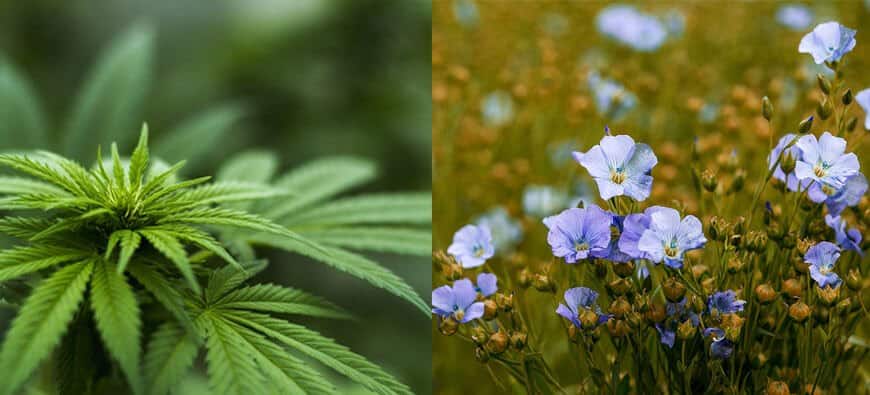Ever found yourself mulling over the choice between linen and hemp fabric, wondering which one is softer to touch? Well, you’re not alone; and we’re going to navigate through this textile terrains together. In this enlightening article, we tackle the question of which fabric, linen or hemp, is softer, and why. Here, you’ll gain insights into the fabrics’ origins, their production processes, and most importantly, their various characteristics, including softness. This valuable knowledge will empower your future fabric choices, giving you the ability to choose the best-suited material for your needs. So, ready to uncover the softer fabric between linen and hemp? Let’s embark on this textile journey.
Top 5: What Is Softer Linen Or Hemp?
- Initial Texture: Linen is typically softer than hemp when both fabrics are new. Hemp’s fibers can be coarser and more rigid initially.
- Wear and Washing: Both linen and hemp become softer over time with wear and washing. Hemp, in particular, can undergo a significant transformation, becoming much softer after multiple washes.
- Fabric Processing: The softness of both linen and hemp can greatly depend on how the fibers are processed. Certain manufacturing techniques and finishes can make hemp as soft as, or even softer than, linen.
- Blend with Other Fibers: Both linen and hemp can be blended with other fibers like cotton or silk to enhance their softness. The particular blend ratio will influence the overall softness of the fabric.
- Subjective Experience: The perceived softness of linen and hemp can be quite subjective and vary among individuals. Factors like personal preference, sensitivity of the skin, and expectations regarding the fabric may influence how soft or coarse either fabric feels to a particular person.
While linen may generally be considered softer than hemp, especially when new, there are various factors like processing, washing, and blending with other fibers that can alter this comparison. If softness is a priority, looking for hemp or linen fabrics that have been specifically processed for softness or blended with softer fibers might be the best approach.
What is Linen?
Definition
Linen is a textile that is made from the fibers of the flax plant. The name comes from the Latin name for the flax plant, ‘linum’, and the earlier Greek, ‘linon’. It is one of the oldest known types of cloth, with evidence of its use dating back thousands of years.
Material
Creating linen fabric involves a lengthy process including growing the flax plant, harvesting the fibers, spinning the fibers into thread, and finally weaving the thread into fabric. Each step of this process is meticulous, contributing to the overall uniqueness and quality of linen.
Properties
The properties of linen are many and varied. It’s a lightweight material that is absorbent and dries quickly, making it a popular choice for warm weather clothing. Linen is also naturally antibacterial and resistent to mold and mildew, which makes it a great option for home goods such as towels and bedding.
Care Instructions
Caring for linen doesn’t always follow the usual rules for laundering. Generally, it’s recommended to hand- or machine-wash on a gentle cycle with mild detergent and avoid bleach. Linen is best air-dried, and can be ironed when slightly damp for the smoothest finish.
What is Hemp?
Definition
Hemp is a plant-based material that is derived from the Cannabis Sativa plant. It has been used for centuries for its strong and durable fibers.
Material
Hemp fabric is made by spinning the strong, durable fibers of the hemp plant into a yarn. The whole process from planting the hemp seeds to harvesting and processing the fibers is labor-intensive and requires specialized knowledge and skills.
Properties
Hemp is anti-bacterial, breathable, and has the ability to wick moisture away from the skin. It is known for its durability and strength, often compared to that of cotton. Hemp also possesses UV-protective qualities and has one of the lowest environmental impacts of all natural fibers.
Care Instructions
Hemp clothing is machine washable, but be sure to use cold water and a mild detergent. Like linen, hemp should be air dried if possible to maintain its shape and quality. Avoid using bleach or fabric softeners as they can damage the fibers over time.
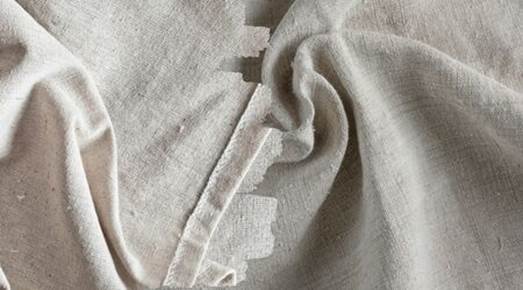
This image is property of static.fibre2fashion.com.
Comparison of Softness
Texture
The texture of both linen and hemp can vary depending on how the fabric has been processed. Both start off quite rough, but soften over time and with each wash.
Weave
The weaving process also plays a part in the feel of the fabric. Both linen and hemp can be produced in a variety of weaves which can influence the fabric’s softness, drape and overall feel.
Processing
The final texture and softness of both materials heavily depend on the processing methods applied. Chemical softening treatments, types of finish applied, and the fineness of the yarns used all influence the final product’s feel.
Conclusion
In general, while both fabrics can become quite soft with wear and laundering, linen is often described as being softer to the touch than hemp.
Environmental Impact
Cultivation Methods
Both linen and hemp are eco-friendly choices when it comes to textiles. They require minimal water and pesticides to grow unlike cotton, paying dividends to the environment in the process.
Water Usage
Both flax and hemp plants are naturally resistant to pests and diseases, making them less reliant on water for growth. Compared to cotton, hemp uses about half the water, while linen uses about a quarter.
Pesticide Use
Hemp requires no pesticides or herbicides to grow, while flax requires significantly less compared to other major crops like cotton.
Sustainability
Both hemp and linen have low environmental impacts and are considered more sustainable than most other textile fibers. They are both biodegradable, renewable, and have a short growing cycle.
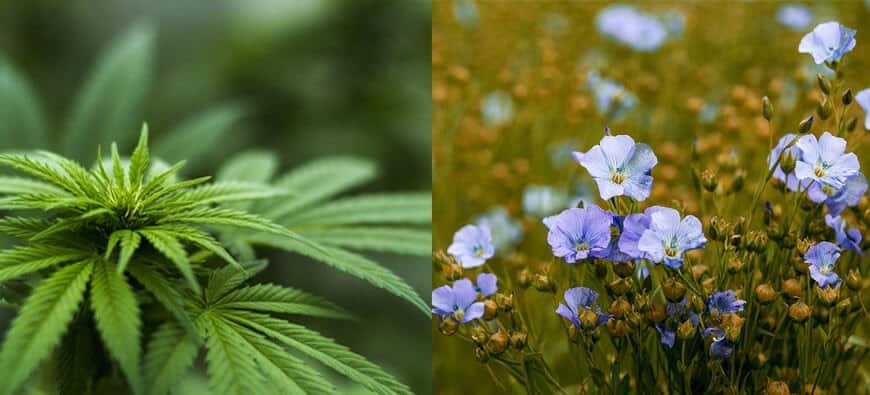
This image is property of frenchaffair.com.au.
Durability
Strength
Both linen and hemp are known for their durability and strength. Hemp is often considered one of the very strongest plant fibers, while linen too is extremely strong and durable.
Resistance to Wear
Hemp and linen are known for their resistance to wear and tear, making them ideal for items that are used often and washed frequently. They tend not to stretch or distort with time.
Longevity
With proper care, both linen and hemp products can last for years, even decades. Their longevity is part of why they can often be more of an investment than other textiles.
Maintenance
While each fabric requires different care, neither are particularly high maintenance. Regular washing, avoiding harsh chemicals, and air drying can keep both hemp and linen looking their best.
Breathability and Comfort
Air Circulation
Due to their loose weave, both hemp and linen allow for good air circulation, making them cool to wear in warm weather and warm to wear in cooler weather.
Moisture Absorption
Both fabrics also have high moisture absorption rates, which means they wick moisture away from the skin, enhancing comfort.
Thermal Regulation
Due to their natural insulating properties, both linen and hemp are known for their ability to help regulate body temperature.
Sleep Benefits
Given their breathability, moisture-wicking abilities, and temperature regulation, both linen and hemp make for a comfortable night’s sleep.
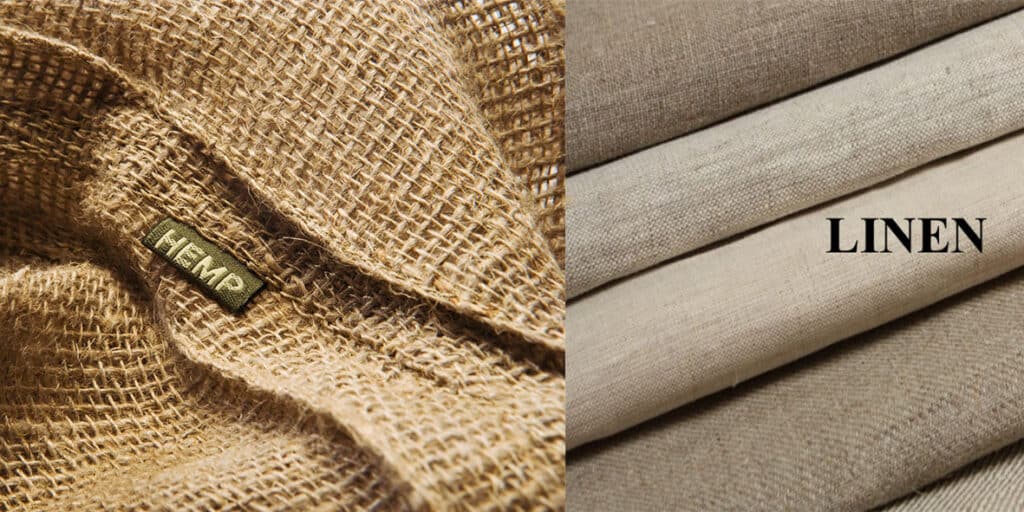
This image is property of deionescu.com.
Allergies and Sensitivities
Irritation Potential
Both hemp and linen are generally considered low-irritation fabrics. However, the processing methods, dye used and individual skin sensitivities can influence this.
Hypoallergenic Properties
Both hemp and linen are hypoallergenic materials that can soothe skin and prevent allergies, making them perfect for people with sensitive skin.
Skin-Friendly Characteristics
Hemp’s antibacterial properties and linen’s softness contribute to their skin-friendly characteristics, which can be particularly beneficial for those with sensitive skin.
Sensitive Skin Considerations
When it comes to sensitive skin considerations, the natural fibers of both hemp and linen tend to be more gentle than synthetic alternatives. As always, it is important for individuals to try each fabric and see what works best for their own skin.
Versatility and Style
Fashion and Clothing
Linen and hemp are versatile fabrics that are used in a wide range of clothing. Linen is popular for summer clothing while hemp is noted for its durability, often used in jeans and jackets.
Home Décor
Both linen and hemp lend themselves nicely to home décor. Linen is commonly found in bedding, tablecloths, and curtains, while hemp is often used for rugs, throw pillows, and upholstery.
Personal Preference
Ultimately, your choice between hemp and linen might come down to personal preference. Some people love the classic, elegant look and feel of linen, while others prefer the casual, laid-back vibe of hemp.
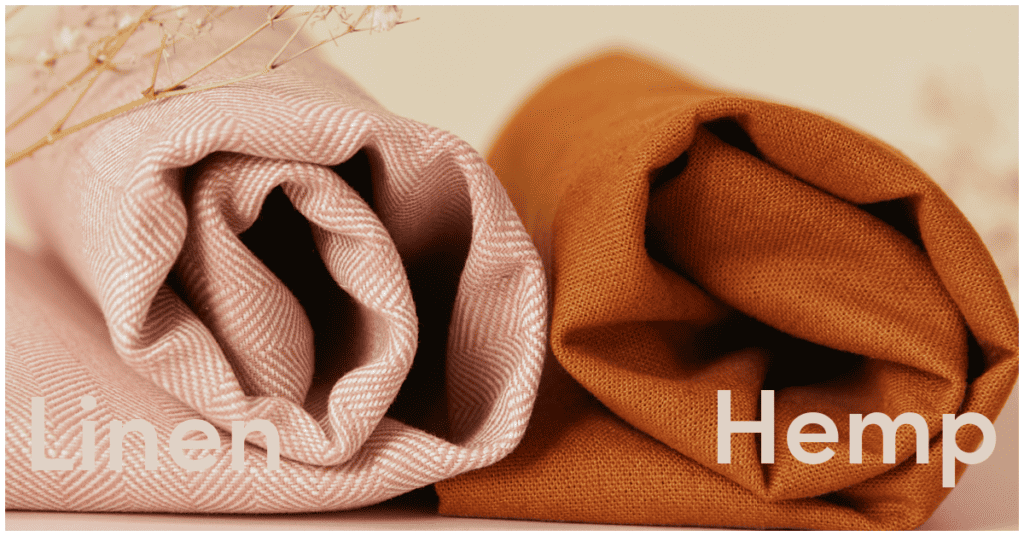
This image is property of cdn.shopify.com.
Recent Posts
Discover how bubble hash is rated on a 1 to 6 scale. From texture and color to aroma and potency, learn the key factors that determine the quality of bubble hash. Whether you're a seasoned cannabis...
Looking to learn about the most popular style of hash? This article explores the different types, from traditional to bubble hash, and reveals the people's favorite. Join us on a journey through the...

